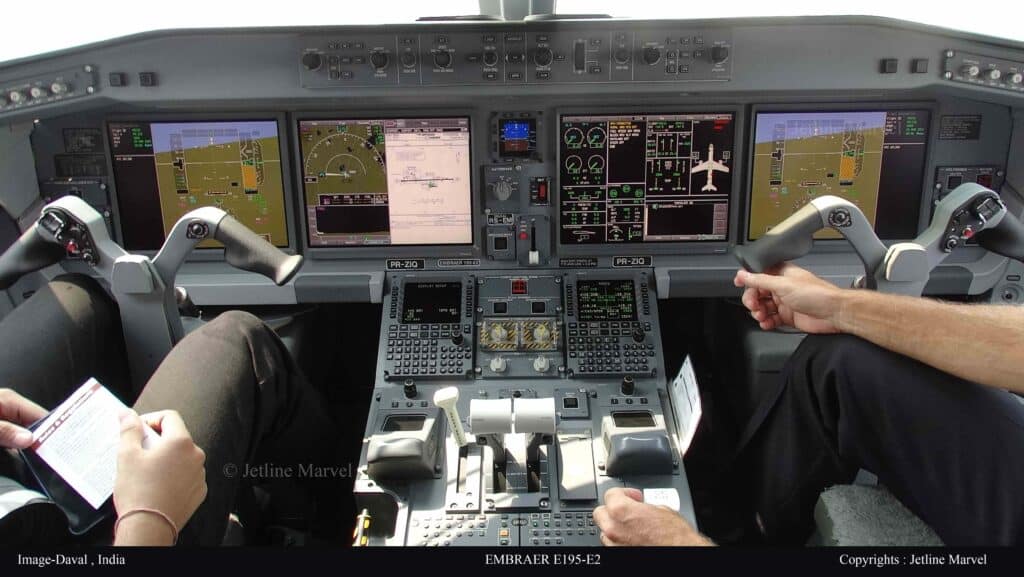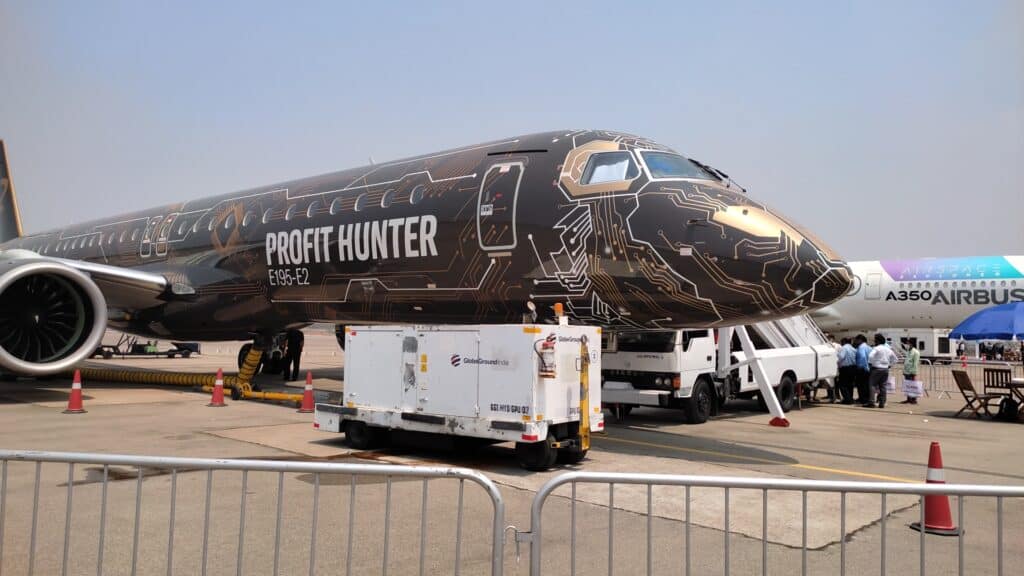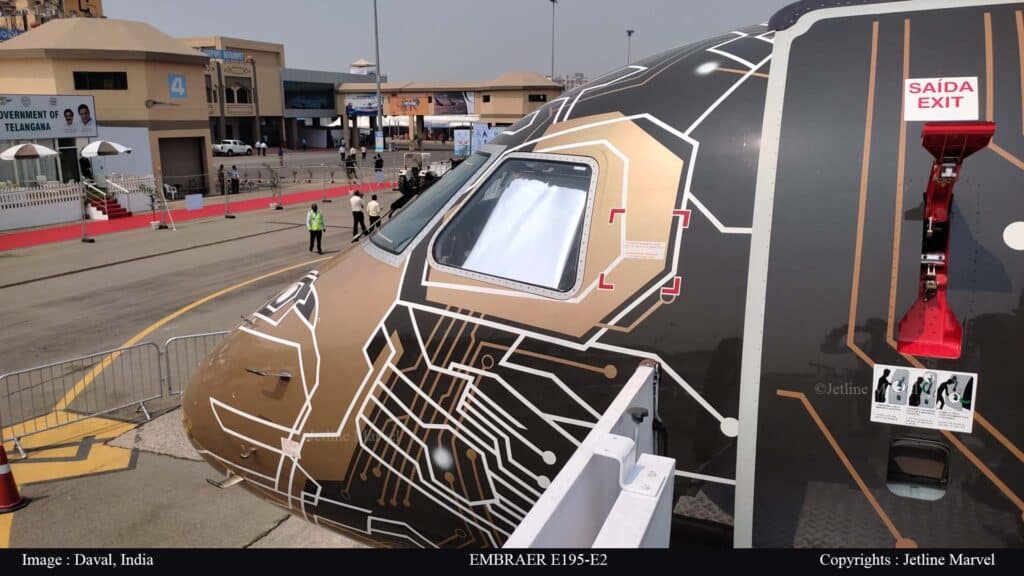Aerospace
How Embraer E195 will be the best fit for Air India.
How Embraer E195 will be the best fit for Air India.

Air India is restructuring its fleets in preparation for its upcoming big airline operations, which might position it as Asia’s largest airline in terms of fleet and traffic volume. “If the Tata Group cannot make Air India work, no one else in the country will be able to,” says Event Emirates CEO. Air India already has its own fleets that operate on a national and international scale.
Air India may be trailing in several areas, such as fleet selection. It is in high demand in both the domestic and foreign markets. It has preserved its tradition and brand because it was once a flag carrier. As time passes, the majority of its fleet is insufficient for the operator to provide more services, thus certain aircraft ranging from 130 to 220 seats are required, which should be ideal for regional connections.
According to Bloomberg, Air India is looking for narrow body aircraft akin to the Airbus A320 and Boeing 737 that can link to national and international destinations. On the other hand, it has the option of operating aircraft in zones or bases such as the north, south, east, and west, and if it does so, this aircraft will undoubtedly become a bigger player in that region, similar to how Air Asia and Indigo focused on perfect region selection and deployed aircraft based on demand and aircraft seat capacity.
[smartslider3 slider=”3″]
How would the Embraer E195 be most suitable for Air India’s regional routes?
If Air India executes so, the aircraft will undoubtedly require 100 to 140 seats, for which Embraer will be the most suited aircraft. This aircraft, in comparison to others, has a large capacity and has already been used in several nations to implement a similar type of marketing plan of connecting 1000 km to 4000 km range connectivity.
Note: Embraer does not recommend/requested us for aircraft promotion. This is an independent fleet fulfilment analysis.
[the_ad id=”13559″]
Embraer E jet family aircraft features.
This aircraft will be suited for Air India’s operations in terms of requirements. It has a track record of success and is also noted in the private and military jet industries. This aircraft has witnessed major advancements since its introduction to the aviation industry.
The Embraer E-Jet family is a series of four-abreast narrow-body short- to medium-range twin-engine jet airliners made by Brazilian aerospace firm Embraer. The E-Jet family is utilized by both mainline and regional airlines around the world, with regional airlines in the United States being particularly popular.
Embraer E-Jets are divided into two commercial families and a business jet variant. The basis model aircraft are the smaller E170 and E175. The E190 and E195 are stretched versions with larger wing, horizontal stabilizer, and landing gear sections.
[the_ad id=”13559″]
All E-Jets have four-abreast seating (2+2) and a “double-bubble” configuration created by Embraer for their commercial passenger jets that allows stand-up headroom. Embraer has delivered high-quality aircraft and services while staying on schedule. When discussing the entire range of aircraft types, Republic Airways (212), SkyWest Airlines (151), Mesa Airlines (80), Envoy Air (62) and JetBlue were the five largest operators of the E-Jet family as of March 2021. (60)
This aircraft has 130 seats in two classes, with dual class seats accommodating up to 100 passengers. The aircraft has a maximum take-off weight of 52,290kg and a basic operating weight of up to 28.667kg. It is powered by a GE CF34 engine that generates 89 kilo newton’s of thrust. This aircraft has a top speed of 871 km/hr and a range of 4,260 km, making it ideal for connecting Indian regions.
Embraer E-Jets E2 family features:
Embraer’s E-Jet E2 family of medium-range jet airliners is the successor to the first E-Jet. The program debuted during the 2013 Paris Air Show. The first variant, the E190-E2, flew for the first time on May 23, 2016, and was certified on February 28, 2018, before entering service with Widere on April 24, 2018.
When it comes to single configuration seats, the Embraer E 195 E has a capacity of 124 to 132. It has a maximum take-off weight of roughly 61,500 kg and a cargo capacity of 16,150 kg. It has a top speed of 833 km/h. The range is 4,917 km, and the engine produces 105 kN force.
There were 54 E2-Jet aircraft in commercial service as of March 2021, with 9 operators. Helvetic Airways (12), KLM Cityhopper (11), Azul Brazilian Airlines (9), Air Astana (5), and Binter Canarias (5) were the top five operators (5)
[the_ad id=”13562″]
The three twinjet variants share a four-abreast narrow-body fuselage with varying lengths and three different new wings, two Pratt & Whitney PW1000G turbofans, fly-by-wire controls with new avionics, and a revised cabin.
It is a competitor to the Airbus A220-300. Because of its low unit costs, the E195-E2 might open up a new market and generate high demand, propelling it into mainline territory. Embraer claims E195 trip costs are 22% less than a 154-seat A320neo and 24% less than a 160-seat 737-8 – yet airlines install extra seats, causing seat costs to differ more than the 6% and 8% claimed by Embraer.
The improved flying stability and accompanying greater lift (lower tail downward force) and weight savings and drag reductions associated with the 26 percent reduction in horizontal tail (tail plane) size result in fuel savings with the now closed loop fly-by-wire control. The adoption of fly-by-wire ailerons, which are also engaged when braking, reduced the weight of the wing structure by 200 kg (440 lb).
According to Embraer, the number of advancements made in earlier generations of aircraft has increased efficiency, resulting in a 25% reduction in fuel consumption per seat when compared to A220-300 aircraft.
Most airlines in India utilise ATR aircraft for small-area connectivity since their engines are noisy, but Embraer uses Pratt & Whitney engines, which are quieter than ATR engines. Star Air currently operates the E145 ERJ in South India.
[the_ad id=”13559″]
Air India Regional connectivity.
If Air India is considering regional connections, the Embraer will be an excellent choice. In terms of competition, this aircraft is up against the Airbus A220. If Air India operates short regional flights with fewer passengers, this aircraft might be ideal. Even some surveys have revealed that Indian-based airlines fly aircraft with passenger capacities ranging from 120 to 150 people. In such instances, this can meet the needs of any airline.
Share your thoughts on this Embraer aircraft for Air India in the comments area. Read our other article about Embraer cabin features : here

Aerospace
Indigo will soon launch Air Taxi Service in India

InterGlobe Enterprises, the parent brand of IndiGo, is set to revolutionize travel in India with its upcoming air taxi service.
Scheduled for a potential launch in 2026, this innovative venture promises a seamless journey for passengers between two bustling hubs. Delhi and Gurgaon in Haryana. The forthcoming service is projected to revolutionize the daily commute, offering passengers a swift aerial journey covering the distance in a mere 7 minutes.
This remarkable efficiency contrasts starkly with the conventional 90-minute drive, underscoring the immense time-saving potential for commuters. The anticipated fare, ranging from Rs 2,000-3,000, makes this innovative mode of transport not only swift but also remarkably competitive in pricing.
At the heart of this ambitious endeavor lies a strategic partnership with Archer Aviation, a pioneer in electric vertical takeoff and landing (eVTOL) aircraft technology. Under this collaboration, Archer will supply 200 state-of-the-art eVTOL aircraft, representing an investment of US$ 1 billion. These cutting-edge aircraft, capable of accommodating up to four passengers alongside the pilot, epitomize the future of sustainable air travel.
Powered by six battery packs, Archer’s eVTOL aircraft boast rapid charging capabilities, enabling a swift turnaround between flights. With a charging time of just 30-40 minutes, these eco-friendly aircraft ensure minimal downtime, maximizing operational efficiency.
Similar services are anticipated to be introduced by the joint venture in Bengaluru and Mumbai as well. Nevertheless, the service rollout period has not yet been made public by the company. Next year, it is anticipated to get its certification. Following this, the company will start the certification procedure with the Directorate General of Civil Aviation (DGCA).
Aerospace
Which is bigger 777x or 787 aircraft ?

The 777X is a new series of the Boeing 777 family and is designed to be larger and more efficient than its predecessor. It features two variants: the 777-8 and the 777-9, being the larger of the two.
The Boeing 777X emerges as the larger sibling within the Boeing family, representing a significant leap forward in both size and efficiency. Comprising two variants, the 777-8 and the 777-9, the latter takes the crown as the larger of the two. With its expansive fuselage and impressive wingspan, the 777X is tailored for long-range journeys and boasts a substantial passenger capacity.
On the other hand, the Boeing 787, affectionately known as the Dreamliner, occupies a niche in the market as a smaller yet formidable aircraft designed for medium to long-range flights. Its distinguishing feature lies in its composite fuselage, a technological marvel that renders it lighter and more fuel-efficient compared to conventional aluminum counterparts. The Boeing 777X is larger than the Boeing 787 aircraft.
When it comes to passenger capacity, the 777-9 reigns supreme, typically accommodating a sizeable contingent of 400-425 passengers in its standard configuration. In contrast, the 787, with its more modest dimensions, typically carries between 240-290 passengers, depending on the variant and layout.
One of the remarkable innovations introduced with the 777X is its folding wingtips, a feature designed to address the logistical challenges of accommodating such a large aircraft in conventional airport gates. These folding wingtips enable the 777X to retract its wings, allowing it to fit into gates designed for smaller aircraft while still reaping the benefits of an extended wingspan during flight, thereby enhancing fuel efficiency and operational flexibility
Aerospace
China Secures Production Certificate for Mass Production of Pilotless eVTOL Aircraft

The first passenger-carrying pilotless electric vertical takeoff and landing (eVTOL) aircraft in the world, the EH216-S, has received the Production Certificate for its eVTOL aircraft from the Civil Aviation Administration of China (CAAC).
This is a significant milestone for EHang Holdings Limited, the leading UAM technology platform company in the world. This outstanding accomplishment is another big step towards mass manufacturing for the eVTOL aircraft and the ensuing commercial operations, building on the ground-breaking acquisition of the Type Certificate and the Standard Airworthiness Certificate for the EH216-S.
The PC is a crucial certificate that the aircraft maker receives from the CAAC, the country’s aviation authority. By obtaining this certificate, EHang has demonstrated that it has set up a quality management system for mass production that satisfies the airworthiness regulation standards set forth by the CAAC, and the company has been given permission to continue producing mass quantities.
It is also a strong guarantee of the calibre of the goods made by EHang. Raw materials, supplier management, manufacturing organisation, production quality control, aircraft pre-delivery test, after-sales repair and maintenance, etc. are all included in the mass production quality management system for the EH216-S.
To ensure that every aircraft and its components that roll off the production line strictly adhere to the approved type design and safety requirements, the system sets clear guidelines and documentation for every step in the production procedure. This ensures comprehensive traceability and safety control.






























